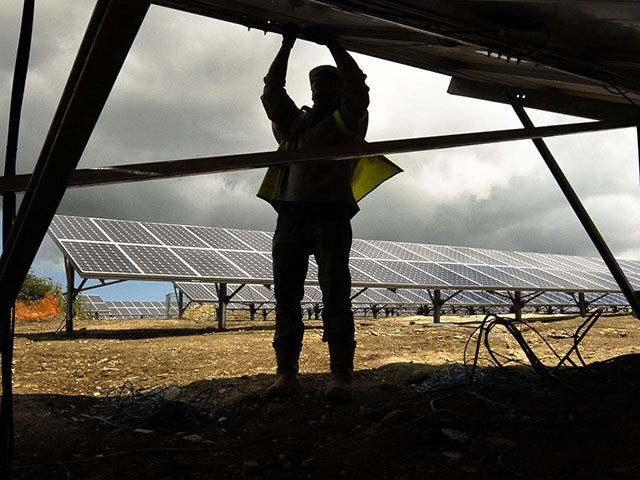
The official who designed Saudi Arabia’s strategy to lure $109 billion in investment for solar energy left his post, raising questions over how quickly the effort will progress.
Khalid al-Sulaiman, a vice president of the King Abdullah City for Renewable and Atomic Energy, has departed because the government didn’t renew his contract, three people with knowledge of the decision said. Another person close to the executive said he retired. The people asked not to be named because they’re not authorized to speak on the matter publicly.
Ka-Care, as the organization is known, was chartered by the king in 2010 to form a strategy on nuclear and renewable energy. Two years ago, it set goals for boosting solar power to reduce domestic demand for oil and natural gas, allowing the kingdom to entrench its position as the world’s biggest exporter of crude. So far, there’s only a handful of small solar projects.
“Al-Sulaiman’s departure is a big loss for Ka-Care and the kingdom,” said Vahid Fotuhi, head of strategic advisory Access, a Dubai-based consultant, and president of the Middle East Solar Industry Association. “He is a man of action, and his departure signals that he wasn’t given enough support by the central government to achieve what he was brought to do.”
Ka-Care works independently of Saudi Arabia’s oil ministry and of Saudi Arabian Oil Co., or Aramco, the state oil company. Waleed Abulfaraj, Ka-Care’s vice president in-charge of nuclear energy, is still in his position since his contract was renewed, three of the people said.
Officials at Ka-Care couldn’t be reached for comment, and calls to the organization’s main office in Riyadh weren’t answered. Al-Sulaiman also couldn’t be reached for comment on his mobile phone and didn’t respond to texts seeking comment. A person at his office said he was unavailable.
By keeping Abulfaraj, the kingdom may be signaling that Ka- Care will concentrate its efforts on nuclear energy. That would allow Aramco and other companies like Saudi Electricity Co. to develop solar power projects on their own, Fotuhi said.
Companies including Canadian Solar Inc., Centrotherm Photovoltaics AG and Showa Shell Sekiyu K.K., a Japanese refiner, have expressed an interest in or are planning to work in the region.
Saudi Aramco has stepped up work on solar projects. The company’s Chief Executive Officer Khalid Al-Falih told a conference in Bahrain on May 18 that Aramco is looking at solar investments with great interest.
It signed initial agreement to develop plants generating 300 megawatt of solar power in remote areas in Saudi Arabia to reduce the burning of diesel for power generation in these areas, al-Falih said. It also helped in setting up a small solar power-generation plant in Farasan Island, which faces the Red Sea coast of Saudi Arabia.
Saudi Arabia gets almost all of its energy from oil and gas produced from its own fields and almost none from renewables, coal, nuclear or hydropower, according to statistics from BP Plc. Stimulating renewable energy would require new policies giving investors a framework for how they can make wind and solar installations pay off.
The target was to bring 41 gigawatts of solar power to Saudi Arabia to 2032, a gigantic effort that would absorb almost all of the world’s panel output for a year. A gigawatt of electricity is almost the amount produced by a nuclear reactor.
“I think the whole plan will be reviewed now after the departure of al-Sulaiman and Ka-Care might focus on a smaller target that can be achieved in a shorter time frame rather than 2030,” Fotuhi said. “One possibility now is that Ka-Care might rather focus on nuclear and let other players jump in and help in developing solar projects.”
The government could either offer feed-in tariffs granting developers a certain price for power supplied from renewables. Or it could tender for a certain amount of solar power capacity, paying developers to install plants for a state-owned utility or Aramco. The latest deals from Aramco fell into the latter category.
Germany was first to introduce the feed-in tariff in 2004 and became the world’s biggest market for solar because of the subsidy, which is paid for by consumers through their power bills. In recent years it’s been ratcheting back the level of support after a boom in installations. A budget would mean the state would pay directly for solar projects, requesting bids from companies to build projects.
Because the Saudi government tightly controls the kingdom’s energy industry, it’s more likely to offer contracts for power, perhaps fixing an annual budget for how much renewable energy the nation should build. Ka-Care hasn’t said much about its thinking on the issue since it briefed investors in May 2012.
Recommended for you
